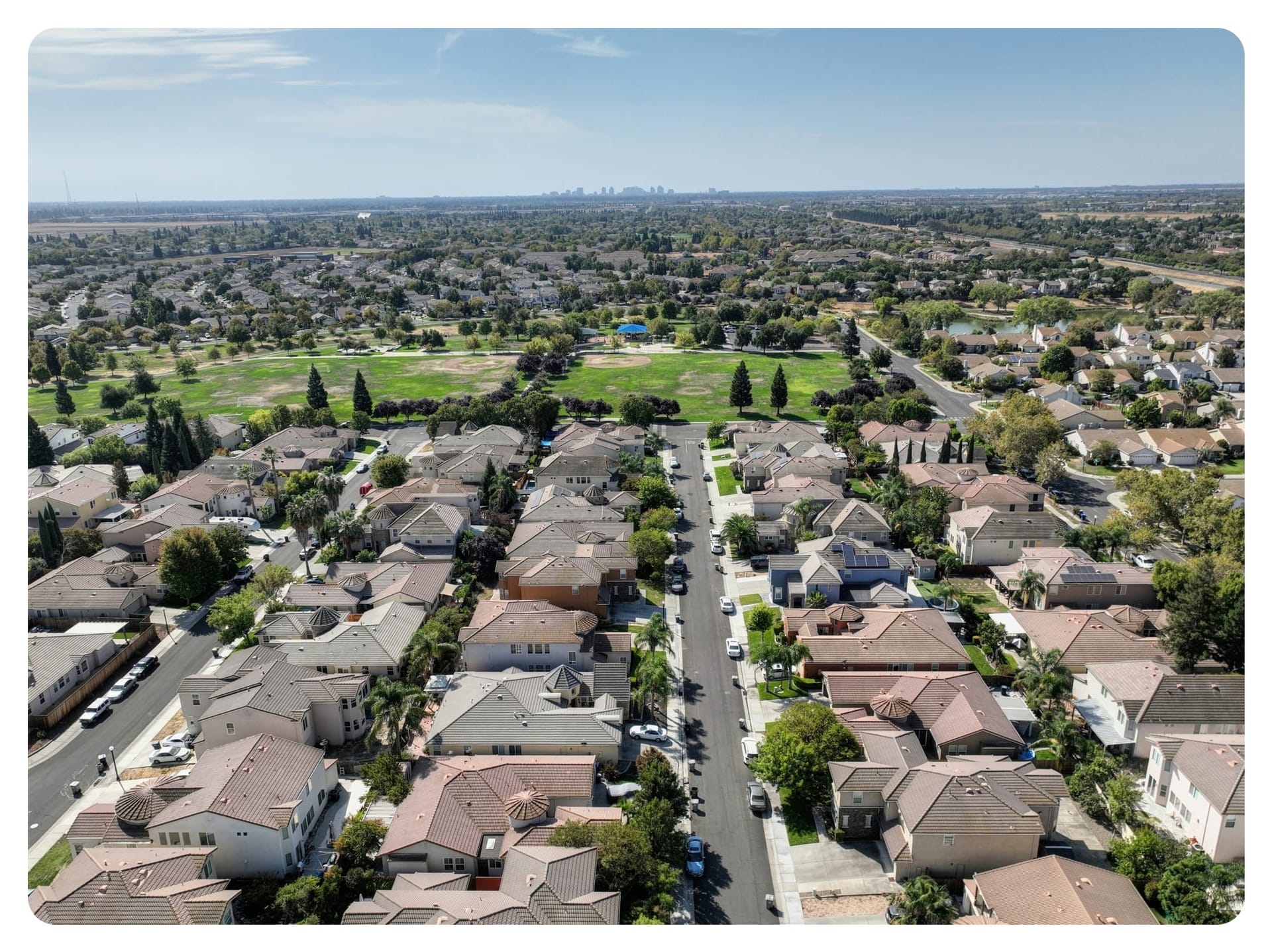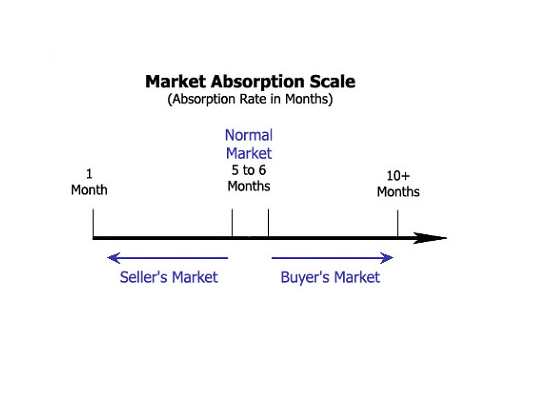Market Absorption Rate

Market Absorption is the monthly rate at which homes would be available if no additional homes were listed for sale. The “simple math” example would be, if three homes are selling each month and there are nine homes currently listed, we have a three-month supply of homes or a three month or 30% absorption rate.
The Market Absorption rate doesn’t refer to days on market or how long homes take to sell. Days on market vary depending on the type of home, condition, and location. The Absorption Rate tells us if we’re generally in a buyer’s market or a seller’s market.

Seller’s Market – In a seller’s market, there is less than 4 or 5 months’ supply of homes. Since there are fewer homes to choose from, sellers are in control, and buyers have to be willing to pay top dollar to get the house they want. Multiple offers happen more often in a seller’s market.
Normal Market – In a normal market, there are a 5 to 6 month supply of homes. A normal market has a balanced level of inventory where the market is not leaning in either the seller’s or the buyer’s favor.
Buyer’s Market – In a buyer’s market, there are more than 6 or 7 months’ supply of homes. Buyers are in control since there are so many homes from which to choose. Sellers often have to give an incentive (pay for repairs or closing costs or take a less than full price offer) to buyers to buy the property.
If you’d like to know the market absorption rate for your area, contact me today!
Here's Rocket's post on the absorption rate.
No spam, no sharing to third party. Only you and me.

Member discussion